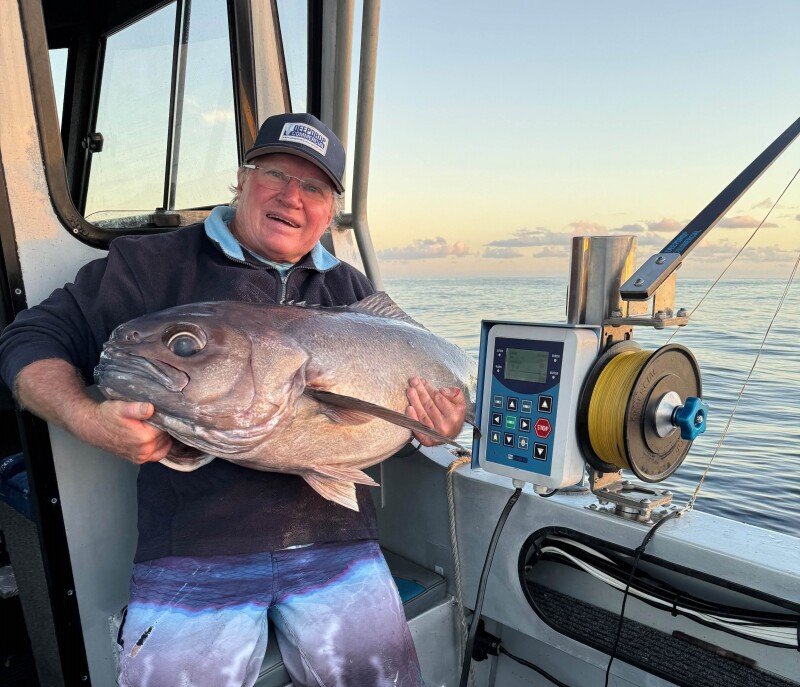In the deep blue waters off Australia’s east coast, Jo Rowley pioneered the tuna and billfish fisheries. “In the late 70s I was catching tuna and swordfish out there,” says Rowley. “I spent six months in Japan learning what I needed to know to export sashimi-grade tuna. I still have a boat that I use to experiment with.”
While continuing to fish to some degree, the 67-year-old turned his attention and creative energy towards fishing gear, particularly bandit reels and deep drop reels. Since starting Deep Drop Commercial eight years ago Rowley estimates he has sent about 500 reels to fishermen all over the world, and he is about to drop an upgraded version of his popular ProFisher Reel. “The new model has the latest digital controls, PWM Speed control, line counter, auto stop, user menu and program etc. and is available with a number of gearbox options to suit the fishing application,” says Rowley. “And these changes are all demand driven. This is what fishermen have been asking me for.”
According to Rowley, the fishermen he serves are often fishing multiple reels alone and in shark-infested waters. “They need to get the fish up quick, but if they’re working more than one reel, they might be paying attention to one, and the other comes up all the way and breaks the boom.”
To help these fishermen, Rowley engaged an international team of engineers and built the ProFisher 1200, with a 15:1 gear ratio option that keeps fish out of the jaws of hungry sharks. “They were losing 80 percent of their catch,” says Rowley. “This reel flipped that, and now they are saving 80 percent.” Other gear options include 25:1 for reef fishing, and 30:1 for deep drop fishing. “We’re using a braided Dyneema line that is very thin but fifteen times stronger than steel. Because it’s so thin it doesn’t bow in the current so we can feel a fish at 1,000 meters, and we can identify it by the way it bites on the line.”
Rowley had to build his own pulleys used at the end of the carbon fiber boom because the thin line would not spin them. “We use two ceramic bearing and building pulleys specifically for these synthetic lines.”
The biggest change in the reel is in the controls and the motor. “It’s the same motor, but instead of using relay controls we’re using MOSFET controls which allow you to control your speed reliably, and they’re more robust,” says Rowley. Combined with the new line counter and the digital menu on the ProFisher 1200, Rowley notes that the new reel makes it possible for fishermen to fine-tune the parameters of the reel to their needs.
“We are gearing up to mass produce these,” says Rowley, who is contracting with a company that has the CNC cutting machines and other hardware needed to scale up production. “They’ll do all the cutting, pressing and welding. We use 8-millimeter, 316 stainless steel for the reels.” Rowley adds that his electrical engineering team is currently reviewing all the firmware and processors that will be the brains of the reel. “As soon as they finish, we will start production,” he says, noting that he will also be offering an upgrade kit for owners of the earlier ProFisher model.







